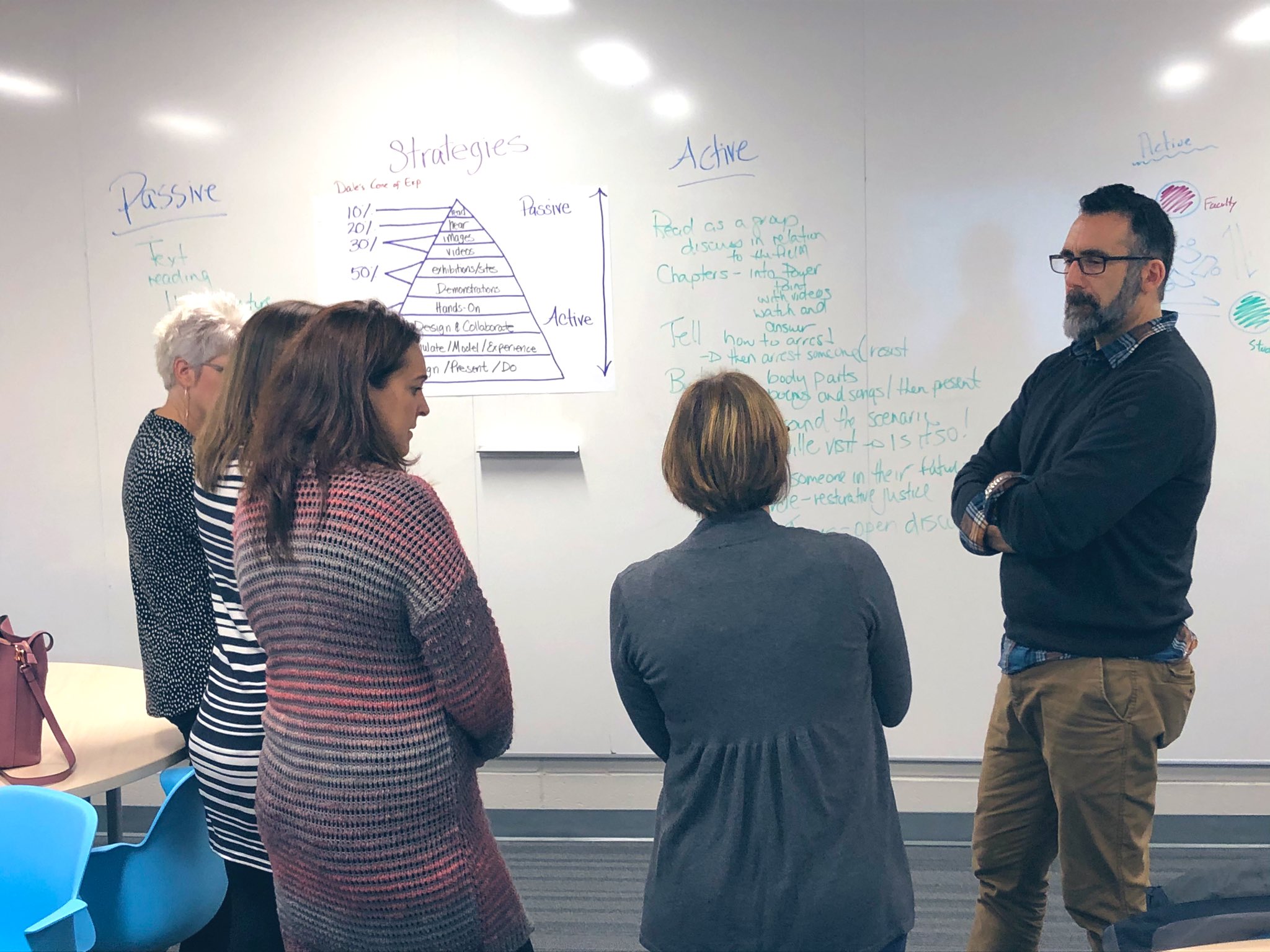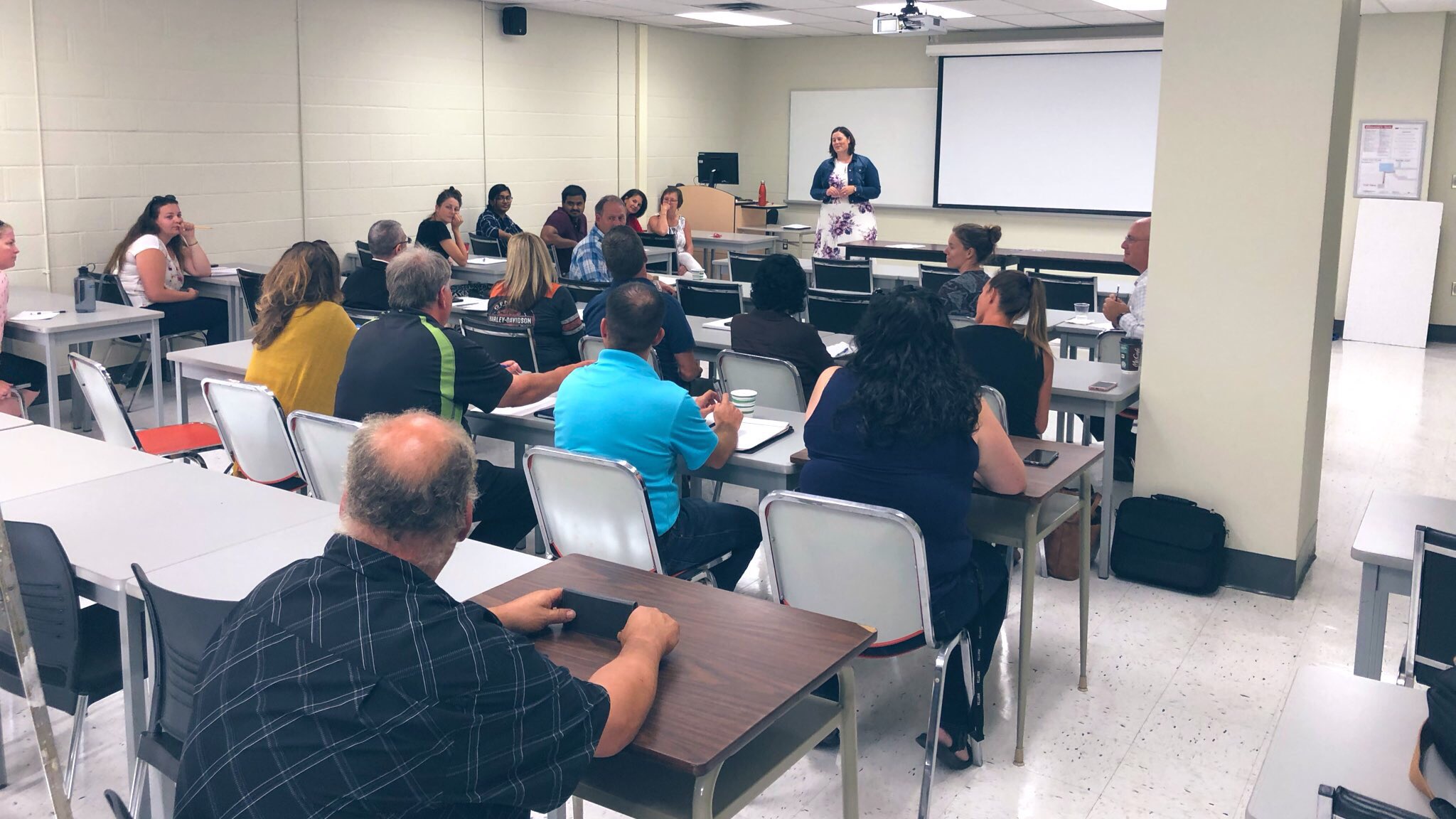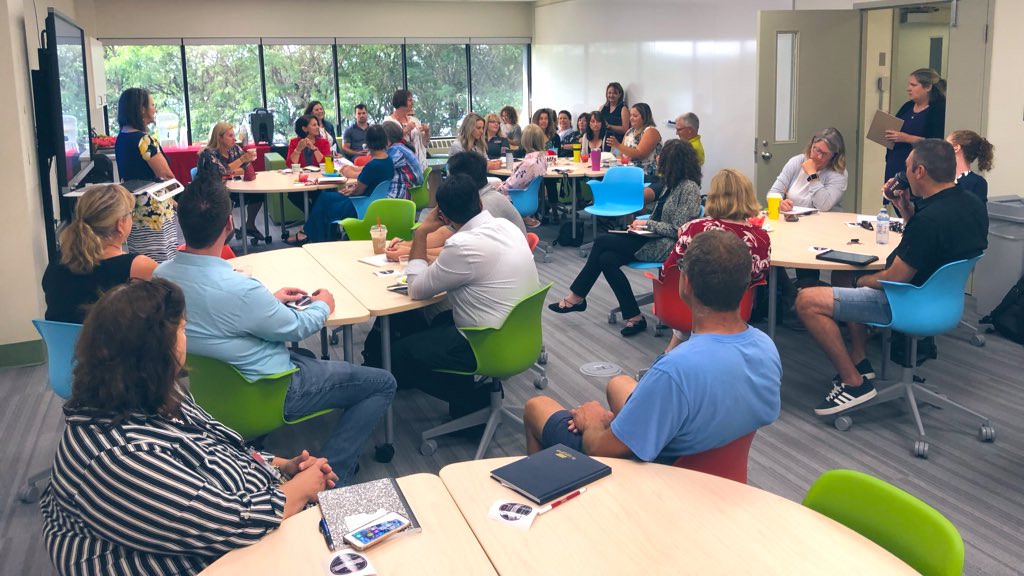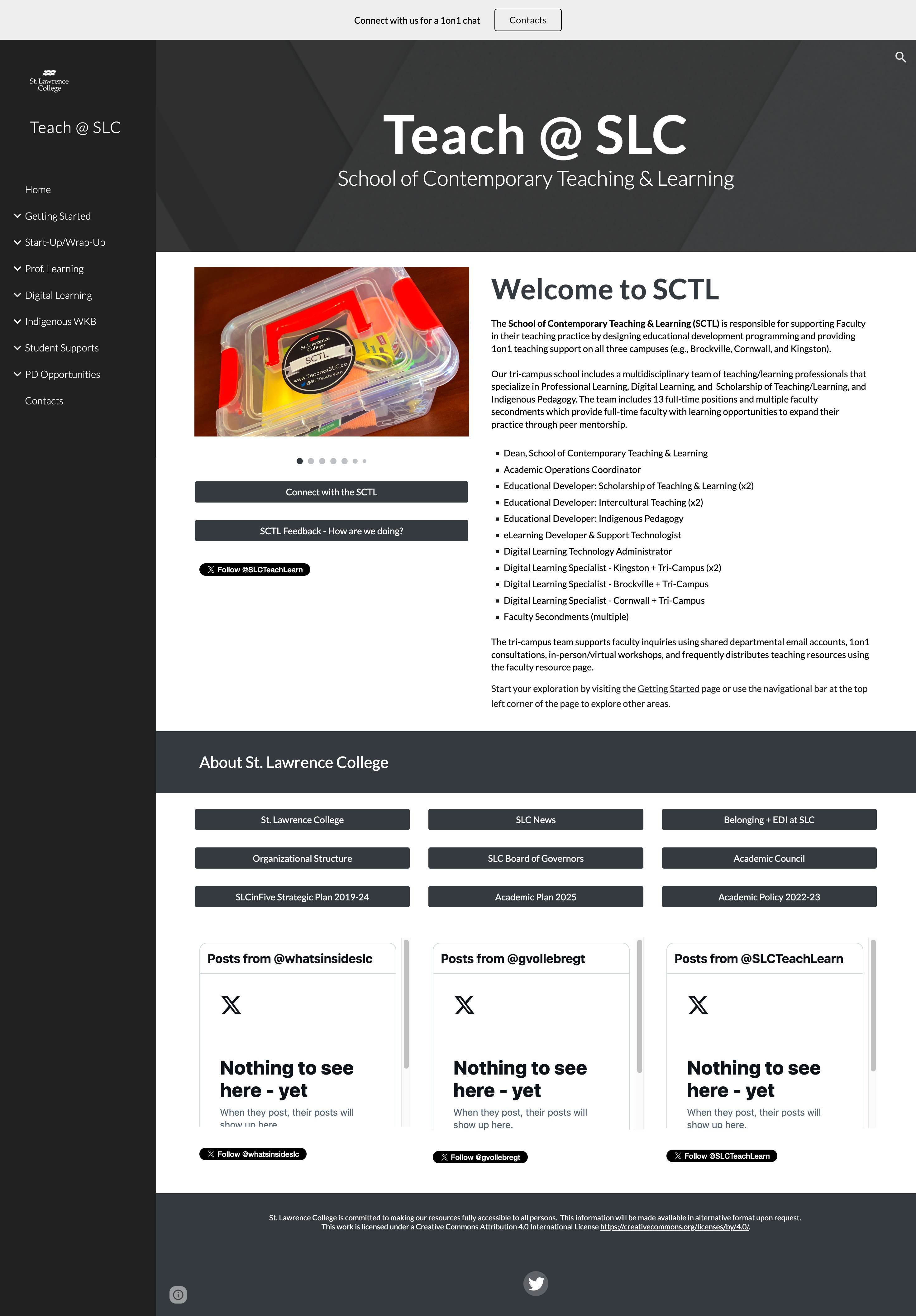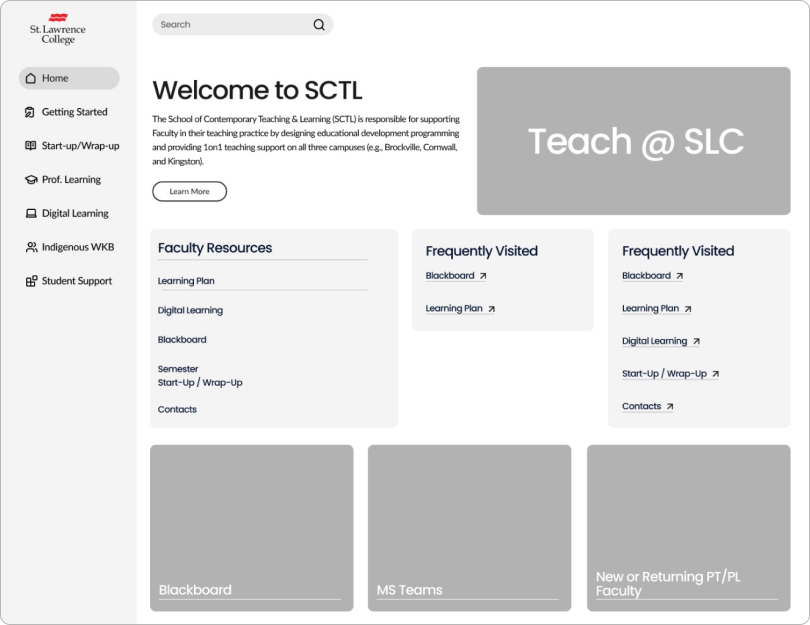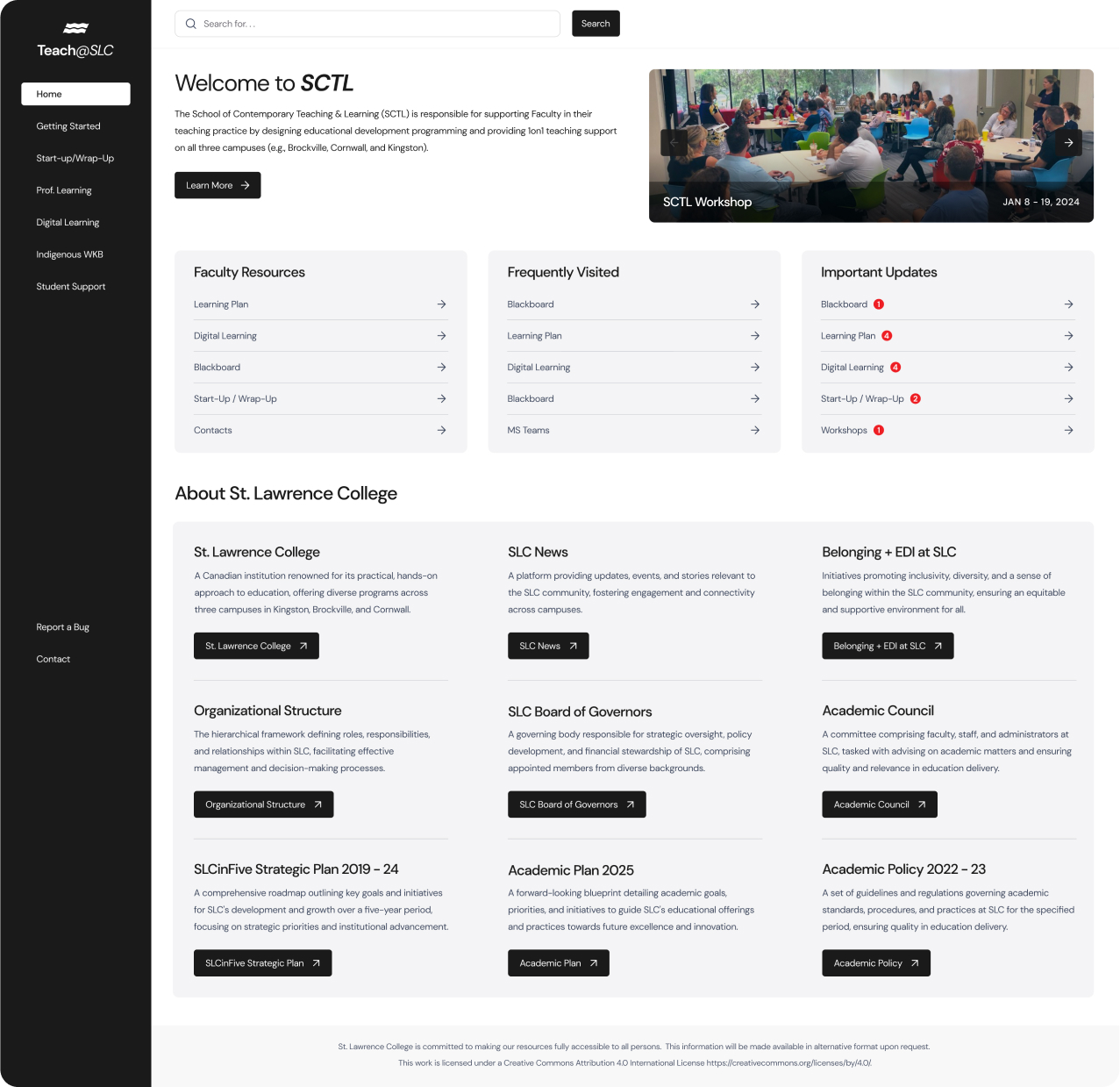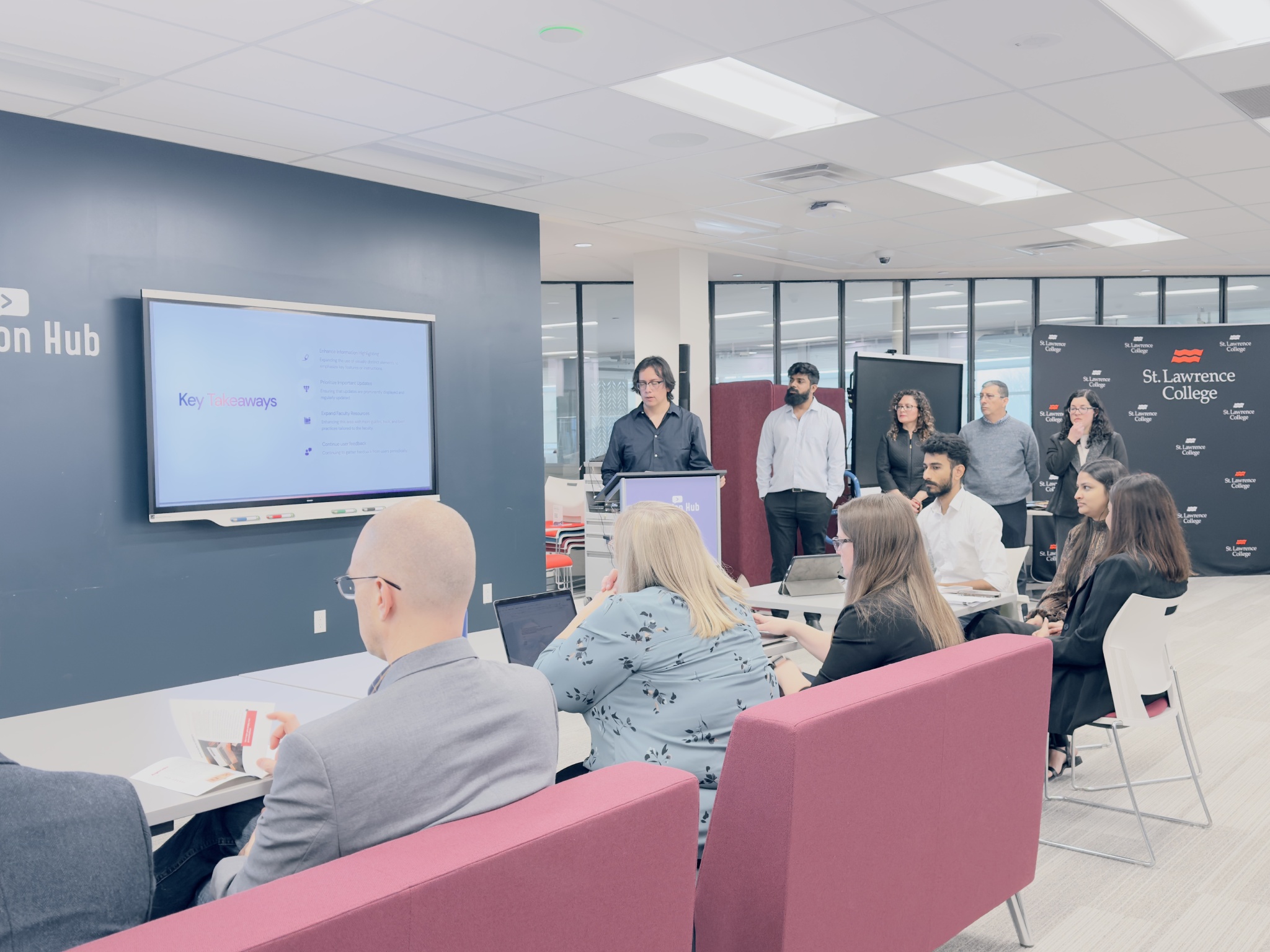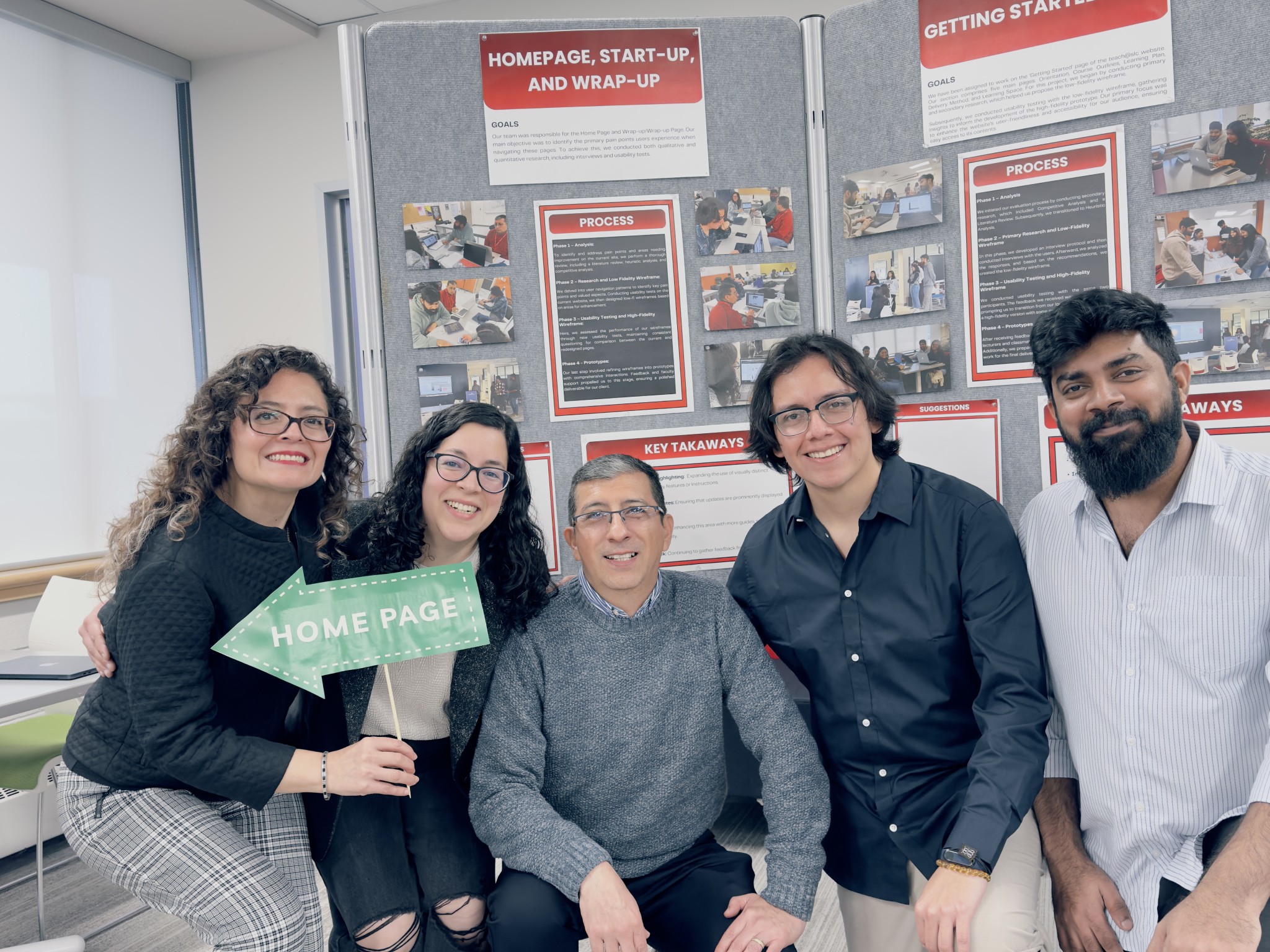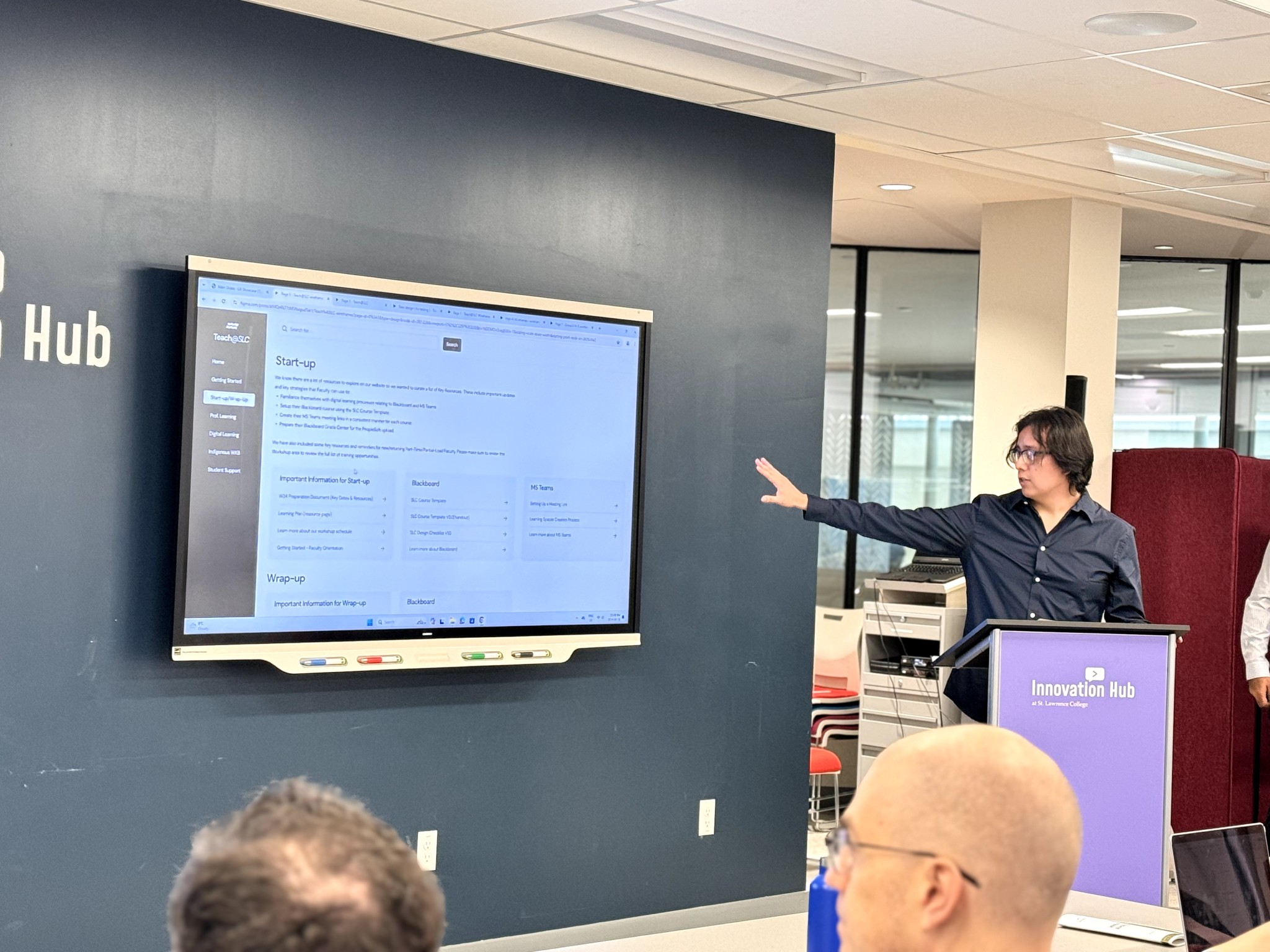Prototyping
Initial Wireframes
For the first iterarion we incorporated icons alongside each section menu to aid in easier recall, we also enhanced the visibility of the selected menu by highlighting it.
Utilised relatable and visually appealing images within pages to alleviate content overload.
We implemented a clearer font hierarchy to facilitate smoother reading. We also defined the usage of buttons and quick links, clarifying to the user what directs them to the next page and what redirects them outside of the current page.
Rephrased left-menu titles for self-explanation, and improved each section's high-level descriptions to ensure clarity and understanding. And most importantly combined the wrap up/ start up pages into one to have a more condensed navigation.
Faculty members talked about "useless information" on the homepage, this highlighted the need for a clean and uncluttered interface. We focused on essential elements like clear organization of the categories they use (like for example the wrap-up/start-up sections)

